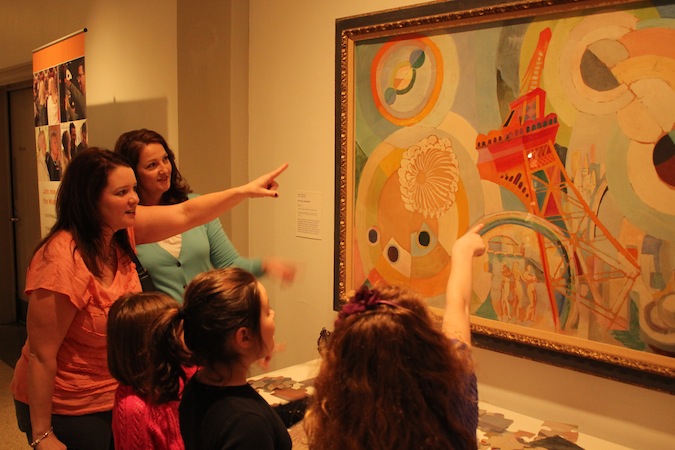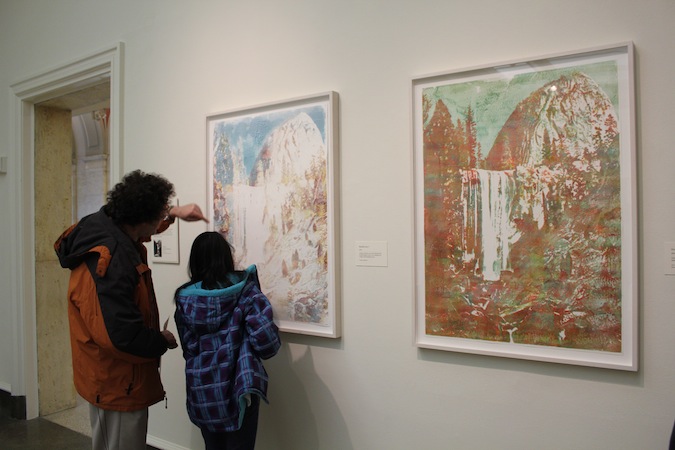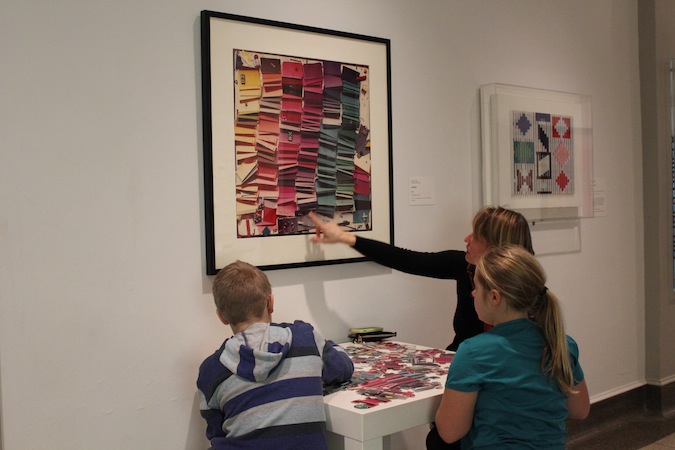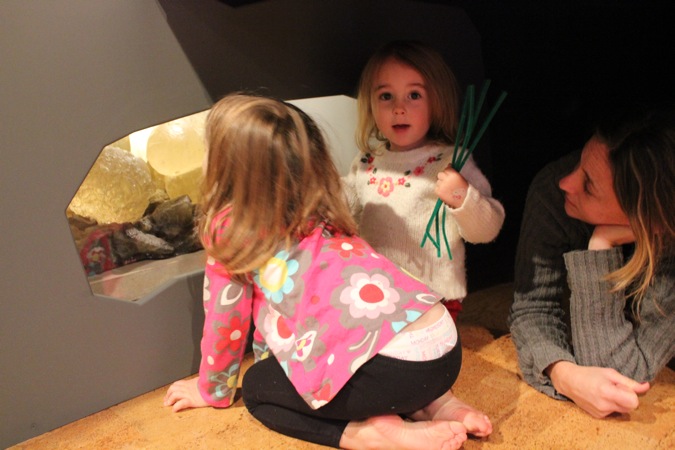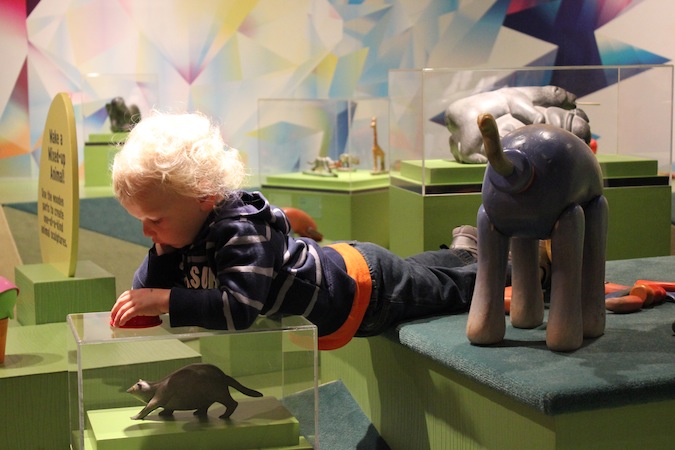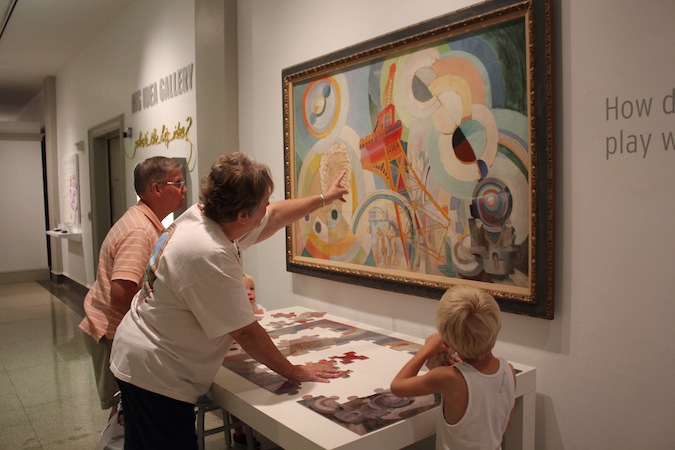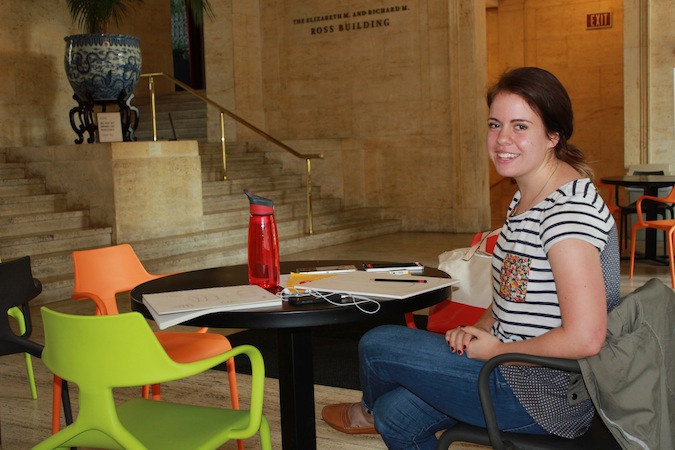This month I spent time lingering near a favorite sculpture currently on view at CMA. Back of Kelly by Evan Penny is a contemporary work that captivates visitor attention. In fact, it kind of freaks people out which is why they congregate near it, contorting their faces and scrutinizing it from different angles.
“That’s weird!”
“It looks like a hologram.”
“Is that real hair?”
These are some remarks I heard this month as people cautiously leaned in to get a better look at this quasi-realistic sculpture. I engaged several visitors in conversation about the work using a laidback version of a strategy called See, Think, Wonder. I learned about this method from my colleagues who work with teachers and schools.
See, Think, Wonder, developed by Harvard educators, is “a routine for exploring works of art and other interesting things.” Although the technique was developed to use with K-12 students, it is useful for curious learners of all ages. What I like about this approach is that it empowers people to exercise critical thinking skills to make sense of an object. It is always useful and interesting to discover the background information about a work, but some of the potential meaning of a work lies within our grasp. The Harvard approach encourages people to trust their own eyes, their personal knowledge and life experience, and their curiosity when pondering an “interesting thing.”
Seeing is the first step. That means taking time to pay attention to what is visible to the eye. This step sounds obvious, perhaps, but in our fast-paced, overstimulated environments, it is very easy to miss something obvious. This step reminds us that we have to make time to look before we can expect to understand. In the case of Back of Kelly, I didn’t need to prompt visitors to stop and observe; this quirky sculpture beacons from across the room. Visitors gathered close, their faces betraying their bewilderment. Many visitors squished their faces up against the wall trying to see the back side of the sculpture.
“Look at the wrinkles on his ear. I think I see a hole for an earring that has grown in.”
“See that eyelash!”
“I see evidence of his age – the moles, gray hairs, age spots.”
“It looks real, but the size is off; it’s larger than real life, unless he is a really big man.”
Thinking is the next step. Thinking means making sense of what we see based on reason, analysis, and inferences. When I asked visitors, “What do you think about it?” they offered contrasting, but equally thoughtful responses.
“He looks like he’s ready to do something. He’s naked — maybe he’s off to the shower. But if we tapped him on the shoulder, I think he would turn around and be surprised to see us.”
“His shoulders are slumped in a way that makes me think he is sad and not smiling.”
The youngest visitor I spoke to was Jacob. His insight shed a different light on the conversation. “I don’t think he is sad. I think he is smiling because if you look at his left cheek you see it is sticking out the way it would look if he was smiling.” Jacob’s mother, Tami, chimed in, “Or, he could be eating something. Maybe he’s sitting in his boxers eating breakfast.”
Wondering is often the most thrilling part of these conversations. Great works of art frequently present more questions than answers. Back of Kelly definitely generates many questions.
“I wonder what his face looks like.”
“I wonder if he knows we are here or if he is confused about where he is.”
“I wonder why the artist made him like this….with just his back to us so that we can’t know what his expression is.”
Seeing, thinking, and wondering with others about a work of art always leads to provocative conversation. And the best part is, everyone has a voice. Everyone can join in.
Try it next time you visit CMA! And who knows, maybe I will be lingering nearby to join in your conversation.
Thank you to the many thoughtful and imaginative visitors who took time to see, think, and wonder with me about Back of Kelly. Thank you Julian, Chynna, Dianne, Kaven, Tami, Jacob, and especially biology student Olivia who left me more curious about silicone and the human body.



